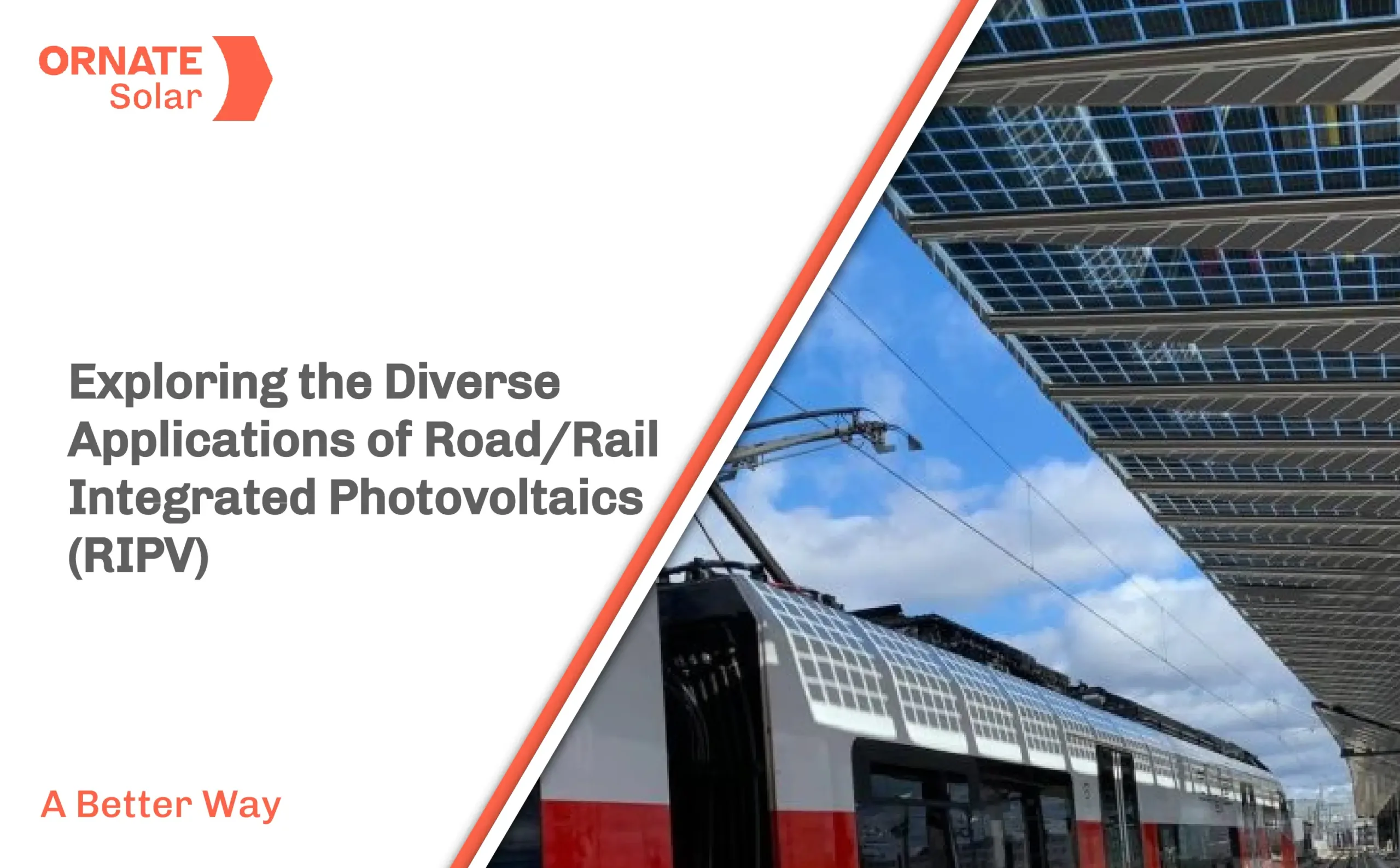

Road/Rail Integrated Photovoltaics (RIPV) involve the integration of solar photovoltaic technology into various infrastructures such as roads, railways, and related transport systems. This innovative approach not only generates renewable energy but also utilizes existing infrastructure for sustainable development.
Applications of RIPV
NBPV (Noise Barrier Photovoltaics)
NBPV combines noise reduction technology with solar energy generation. By installing photovoltaic panels on noise barriers along highways or railways, these structures serve a dual purpose. They mitigate sound pollution for nearby residents and generate clean electricity simultaneously. This integration is particularly beneficial in urban areas where there is much noise and energy demands are also high.
Example- The Domat/Ems A13 is the world’s first NBPV, setting the benchmark for future installations. This pioneering project has demonstrated the reliability and longevity of NBPVs, even in high-dust environments where regular cleaning is not feasible. In 2019, this system was repowered thus able to generate more than 300 MWh of electricity annually.

Solar Parking Canopy
Solar parking canopies utilize the space above parking lots to generate solar power. By covering parking areas with solar panels, these canopies provide shade for vehicles while producing renewable energy, which can be used to charge E-vehicles. This application not only promotes sustainability in transportation hubs but also contributes to carbon footprint reduction.
Example- At Rutgers University, solar parking canopies have been installed across 16 locations, along with the university’s office of Institutional Planning and Operations in Piscataway, generating 14.5 MW of electricity. These canopies not only provide sustainable energy but also offer shade and protection for parked vehicles.
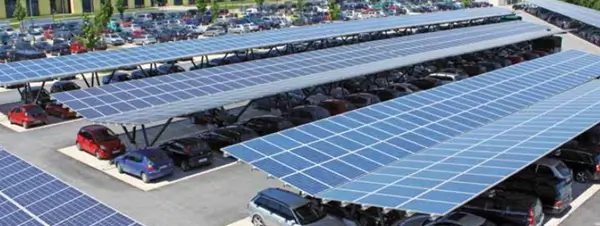
Railway Station Infrastructure
Integrating photovoltaic panels into railway station infrastructure such as platforms, roofs, facades and waiting areas can significantly contribute to energy self-sufficiency. Solar panels on station roofs can generate electricity to power station operations, lighting, and other amenities. This approach helps reduce dependency on external power sources and lowers operational costs while promoting environmental sustainability.
Example- At King’s Cross railway station in London, a pioneering 240 kWp rooftop PV system has been installed. It is one of the UK’s most significant RIPV installations. Costing £1.3 million, this project incorporates 1,392 custom-made glass laminate solar panels spanning 2,300 square meters of roof space. The system is generating 175,000 kWh annually, supplying 10% of the station’s electricity needs amidst its bustling traffic of 40 million passengers annually.

Solar Roof Cycling Track
Cycling tracks with integrated rooftop solar combine active transportation with renewable energy generation. These tracks feature solar panels above pathways, providing shade for cyclists and pedestrians while harnessing solar energy. Such installations are ideal for urban environments, where promoting sustainable transportation and energy efficiency are critical.
Example- Healthway solar-roof cycling track in Hyderabad spans 23 km with a width of 4.5 m, integrating 29,468 Monofacial modules. It has the potential to generate 16 MW of electricity. This substantial energy output is equivalent to powering 32,000 streetlights or illuminating 800 km of city streets.
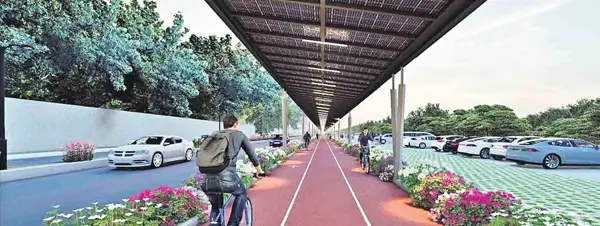
Solar Pathways
Solar pathways integrate photovoltaic panels into walkways and bike paths. These installations provide lighting and safety for pedestrians and cyclists while generating clean electricity. Solar pathways are particularly suitable for parks, campuses, and urban green spaces, where they enhance sustainability and promote active transportation options.
Example- In Wuxi city, Jiangsu province, China, the BIPV Pavement, completed in February 2023, integrates PV panels with ultra-clear tempered glass. This innovative pathway generates 1,950 Wp of power from 15 panels, each producing 140 Wp. It has 50% transparency. It exemplifies sustainable urban design by combining renewable energy generation with functional pedestrian infrastructure.
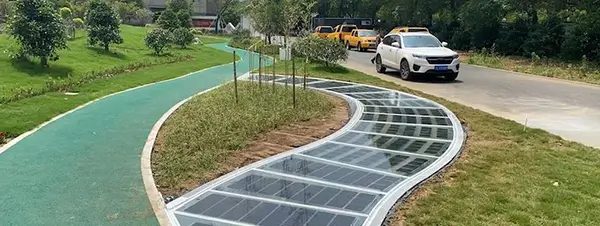
Conclusion
Road/Rail Integrated Photovoltaics (RIPV) present a viable approach to environment friendly urban development and transportation infrastructure. With applications ranging from solar paths and cycling lanes to NBPVs, RIPV not only produces clean energy but also enhances the sustainability of urban areas. Due to the advancement in technology, the cost of RIPV installation will decrease, which will motivate its adoption. In the future, RIPV is expected to be a key player in lowering carbon footprints, minimizing the effects of urban heat islands, and encouraging the integration of renewable energy sources into built environments across the globe.
About Ornate Solar
Ornate Solar is a leading solar company with 10 years of experience in the industry and the mission to reimagine the way solar is installed worldwide.
By not only partnering with the best-in-class solar brands but also developing our high-quality solutions, (panels, solar inverter, accessories, InRoof), we develop and deliver solutions that are modern, reliable, and effective.
If you are looking for high-quality solar solutions, reach out to us at 011 43536666 to discuss your options.


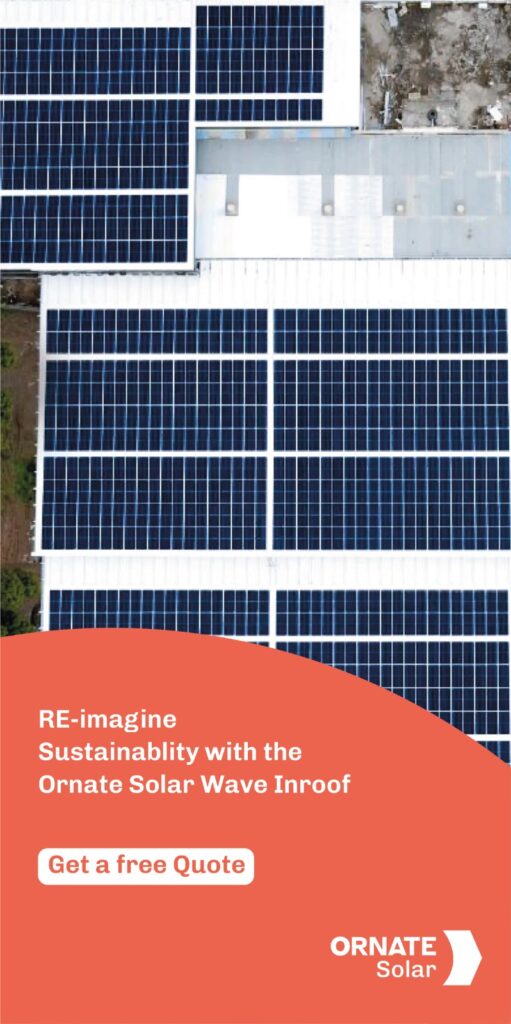



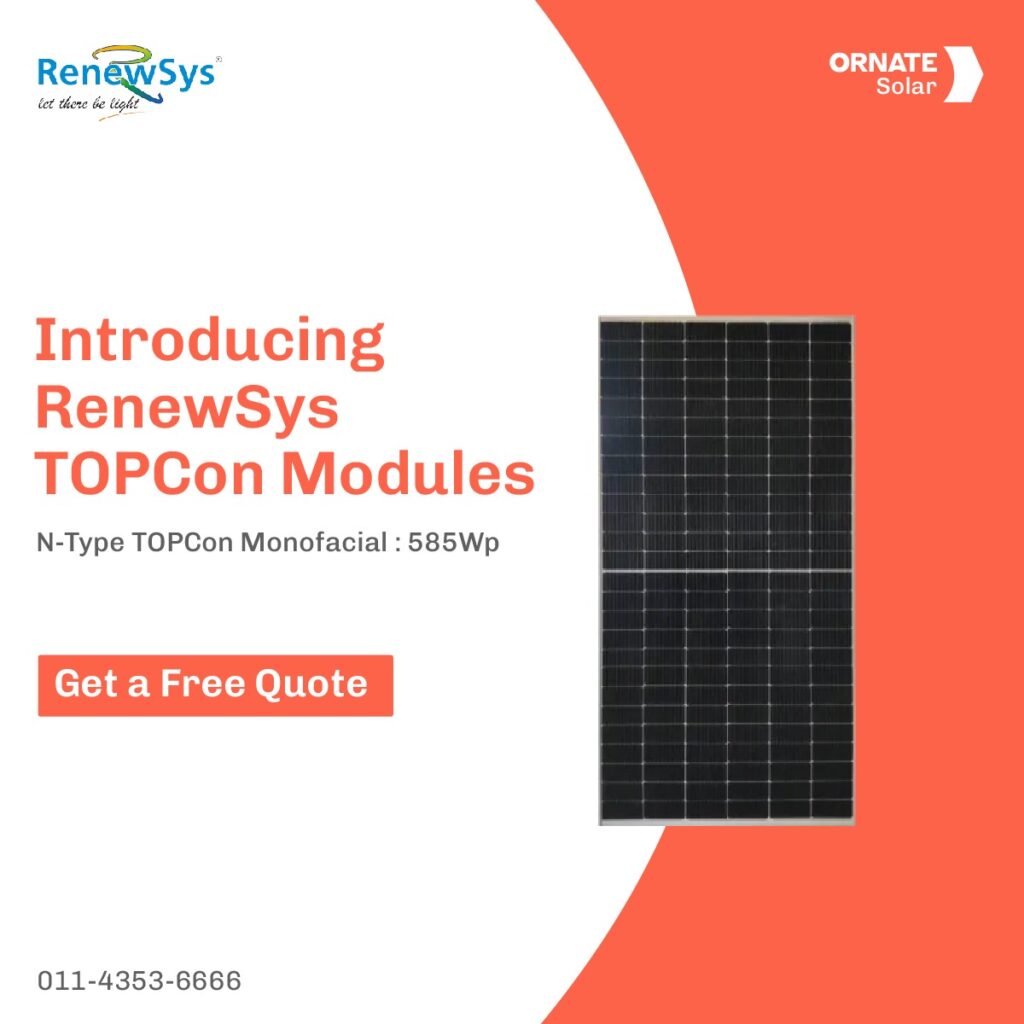

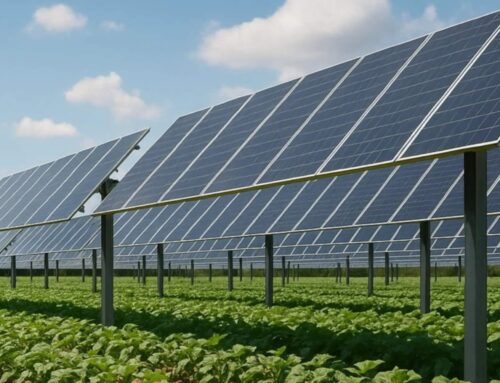
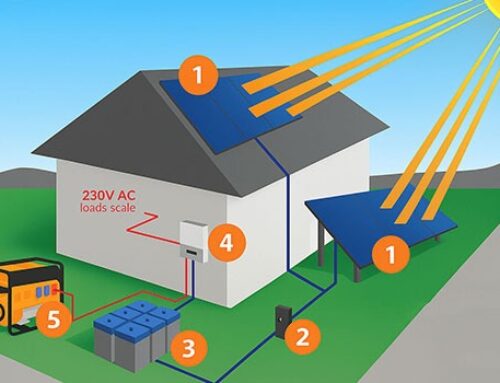


Leave A Comment